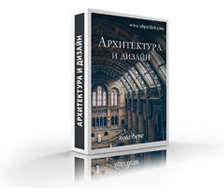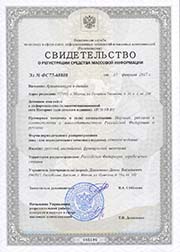MAIN PAGE
> Back to contents
Publications of Gorelova Yuliya Robertovna
|
Gorelova Y.R. - Omsk architectural environment of the Developed Socialism era
|
|
pp. 62-80
|
DOI: 10.7256/2454-0625.2020.1.30068
Abstract: This article examines the trends characterizing the development of Omsk architectural environment of the 1960’s – 1980’s. The unfolded transformations are views in relation to the historical-cultural context and historical-architectural process. The author analyzes the nationwide trends, as well as the regional specificity. The peculiarity of this research consists in drawing parallels between the architectural-artistic and historical-cultural processes. Attention is given to such questions as the shift in stylistic trends, residential construction, and erection of significant objects of public designation. Alongside studying the special scientific literature and sources, the author attracts the materials of city dwellers’ reminiscences that contain the information of reflective character for understanding their perception of ongoing changes within the urban environment. The acquired results allow characterizing the development of architectural environment of a large Siberian city (Omsk) during the Developed Socialism period (1960’s – 1980’s) in correlation with the historical-cultural and architectural-artistic contexts. The presented materials may be used in city planning decisions and development of conceptual framework of the regional cultural policy. The article is relevant for the specialists in the history of architecture and construction, as well as broad audience interested in history and cultures of their region.

|
Gorelova Y.R. - Figurative clichés of a city in the poetic texts
|
|
pp. 141-149
|
DOI: 10.7256/2310-8673.2018.3.25465
Abstract: In the context of this publication, main attention is given to examination the key factors of the figurative frame of a city. Figurative frame of the territory implies the system of most powerful, vivid and stable images associated with a certain territory and expressed through pivotal metaphors. Therefore, the object of this research is the poetic texts dedicated to a city; while the subjects of the determination of the typical, conceptual features that characterize the urban space as such, as well as peculiar attributes of the urban space of Omsk. The topic under consideration is elucidated with the priority of interdisciplinary paradigm and culturological model of research. Image of a city is viewed as a result of interaction of the architectural-landscape environment with the individual and collective consciousness of the city dwellers. The ideal component of “image of the place” is formed as a reflection of individuals and communities that populate this space. In this sense, the combination of images-symbols and myths sets the visual perception of a city for its residents. Each city dweller, entering into a dialogue with the city, contributes to the creation of its ideal – mythical space. The author believes that the images of the painters and literary artists most precisely and vividly recapture the subtle aura, individuality and distinctness of a particular place, which is why these materials should be referred to during a comprehensive research of the figurative space of a city.

|
Gorelova Y.R., Gefner O.V. - The problem of structuring urban territories in perception of city dwellers (on the materials of Novosibirsk)
|
|
pp. 134-140
|
DOI: 10.7256/2310-8673.2018.3.26690
Abstract: The subject of this research is the structural-spatial perceptions of the city dwellers. Within the framework of this article, the author presents the results of sociological survey conducted in the city of Novosibirsk focused on the examination of specificity of spatial perception of the city residents of central and suburban territories of their city. As a result, the author determined the spaces attributable to the center or suburbs; factors that influence the perception of certain spaces as central or of increased value; specifies the conceptual parameters of the center in perception of the residents of large city. The main research method is the questionnaire, using the principle of quota sample based on consideration of demographic characteristics of parent population. The results of research allow assessing the specificity of the structural-spatial perception of city dwellers of the place of their residence; can be used in city-planning solutions; and development of the conceptual bases for the regional cultural policy. The majority of answers is defined by the objective characteristics of life in the large cities, such as considerable size, accelerated pace of life, environmental problems, high level of visual monotony of the environment mostly presented by the objects of prefabricated housing, etc.

|
Gorelova Y.R. - City as a concept and a visual artistic image
|
|
pp. 74-89
|
DOI: 10.7256/2310-8673.2018.1.24086
Abstract: This article portrays city as a certain mental construct, cluster of ideas, as well as analyses the essential features of a city, which allow identifying the distinctness of such fragment of reality in people's perception. The author analyzes the connection between the terms of "concept" and "image", considering their interaction at the level of essence and structure. Particular attention is paid to the specificity of artistic image as a special type of imagery, along with the images of everyday perception, official images, and others. At the same time, prioritized attention is given to the specificity of artistic imagery of the city captured in the visual arts. The author reveals the dynamics of the key trends in reflecting a city as a concept in the works of artists of various eras. Peculiar for this study became the imposition of subject areas of a city as a concept (as a term, mental construct) and methods of working with visual sources, namely the analysis of visual "texts" in form of the urban landscapes (the author compiled 843 city landscapes). A link is established between the term of "city" and the spectrum of qualities, characteristics and associations that stand behind it and form the perception of such fragment of reality. Analyzing the connection between the terms of "concept" and "image", the author concludes that the image and the concept have a similar structure (centered core, following by concentric layers in proportion to weakening of characteristic and decrease of its importance and awareness in the consciousness of recipients). However, the term of "image" is broader, filled with visual and emotional components. The concept is more focused on the category of essential and typical features, as well as familiar meanings. Describing the specificity of artistic image, the author notes that it is related to specificity of the sphere of art, which distinctness manifests in subjectivity and emotionality of perception and presentation. The author determines the range of basic characteristics included in the concept of "city" that allow singling out the specific perception of this fragment within the framework of artistic imagery reproduced in works of art.

|
Architecture and design, 2018-1
|
|
Gorelova Y.R., Gefner O.V. - Reconstruction of leisure and entertainment facilities: the regional aspect
|
|
pp. 31-45
|
DOI: 10.7256/2585-7789.2018.1.26854
Abstract: The object of this study is the buildings designed for leisure and entertainment facilities such as cinemas and theatres. The subject of this study is the facts of reconstruction that took place in the first decades of the XXI century. The research priority lies in examining the regional (Omsk) reconstruction experience of the cinema buildings and cultural centers established during the Soviet time. However, the main attention is focused not on the engineering and technical characteristics, but rather the transformation of artistic-aesthetical and figurative characteristics of the reconstructed objects. The results of this work allow becoming familiarized with the specificity of reconstruction of the cinemas and leisure entertainment facilities that unfolded in Omsk during the first decades of the XXI century. The authors underline the meagerness of the architectural-figurative solutions of the reconstructed objects. It is noted that following the reconstruction, the majority of objects lose their individuality, vibrancy, and poorly integrate into the architectural-historical and urban development context.

|
Architecture and design, 2017-4
|
|
Gorelova Y.R. - Architectural ensembles of Omsk XVIII - mid XIX centuries: cultural significance, renovation problems
|
|
pp. 31-45
|
DOI: 10.7256/2585-7789.2017.4.26691
Abstract: The object of this study is the architectural ensembles of Omsk formed in the XVIII - XIX centuries. The subject of this work is the study of their cultural significance, preservation, use and renovation issues. The author notes the artistic and stylistic features of the architectural objects included in the ensembles, as well as the information characterizing the conditions of their erection and existence in the architectural environment of the city. The author based on not only historical and artistic significance, but also semiotic significance for the Omsk text considers monuments of architecture and town planning. The results of the study make it possible to assess the significance of the architectural heritage of Omsk, created in the XVIII - XIX centuries, to determine its cultural significance at the present stage and to characterize the available methods of its existence and use. The author characterizes key architectural ensembles of Omsk XVIII - XIX centuries in interrelation with the historical and cultural context, emphasizing their cultural and semiotic significance for the Omsk architectural text.

|
Gorelova Y.R. - Urban environment in perception of residents of a large provincial city (on the example of Omsk)
|
|
pp. 51-60
|
DOI: 10.7256/2310-8673.2017.1.21203
Abstract: This article presents the results of sociological research aimed at identifying the characteristics of the urban environment perception of the inhabitants of a large provincial city (on Omsk data). As a result, the author formulates a list of parameters covered in this study. The main parameters are the following : firstly, the assessment of the subjective perception of citizens of the visual characteristics of urban environment (including aesthetic, formal (size, structure, composition); secondly, the assessment of the level of emotional perception (based on a list of basic and secondary emotional state); and thirdly, the additional features aimed primarily at identifying the parameters inherent to urban lifestyle author characterizes the dynamics of the research interest in urban space perception problems. The author develops an original version of semantic differential consisting of twenty polar scales defined by the pairs of antonymous adjectives. Within the framework of this research, the pairs of antonymous adjectives are deliberately mixed between the blocks, but in the preparation of the questionnaire, the author takes into account the existence of such conceptual blocks as the visual characteristics of space, emotional perception, and additional characteristics. The results of the research allow estimating the current state of perception of the inhabitants of the city environment of their stay, and can be applied in the development of urban solutions alongside the conceptual foundations of regional cultural policy. Most of the responses are determined by the objective characteristics of lifestyle in the large cities, such as substantial size, rapid pace of life, environmental problems, a high level of protection provided by the visual monotony largely objects panel construction and others.

|
Architecture and design, 2017-1
|
|
Gorelova Y.R., Konovalov I.L. - Legacy of constructivism in Omsk: issues of preservation and actualization
|
|
pp. 20-26
|
DOI: 10.7256/2585-7789.2017.1.22159
Abstract: Within the framework of this article, constructivism is viewed not only as a phenomenon of Russian culture, but also as an important segment of architectural heritage. The authors analyze the prerequisite for origination of such art style along with specificity of its implementation in one of the Siberian largest cities – Omsk. Following the logics of covering the topic at hand, the author gives characteristics to the key aesthetic and constructive innovations of constructivism, its contribution into the development of architectural theory and practice, focusing attention on the peculiarities and factors of realization of the national trends in the context of the actual local space of a Siberian city. The authors underline the need for acknowledging the importance of constructivism’s legacy as a segment of architectural heritage. The research results allow assessing the characteristic and relevance of constructivism as a segment of architectural heritage, which is directly associated with the specificity of historical situation established in Russia within the post-revolutionary period. At this time, the buildings belonging to this art style are clearly underestimated, which is why many of them are still not protected as historical landmarks and are subject to reconstruction.

|





